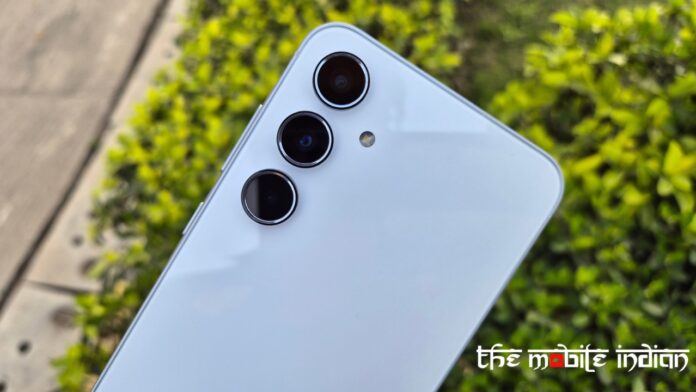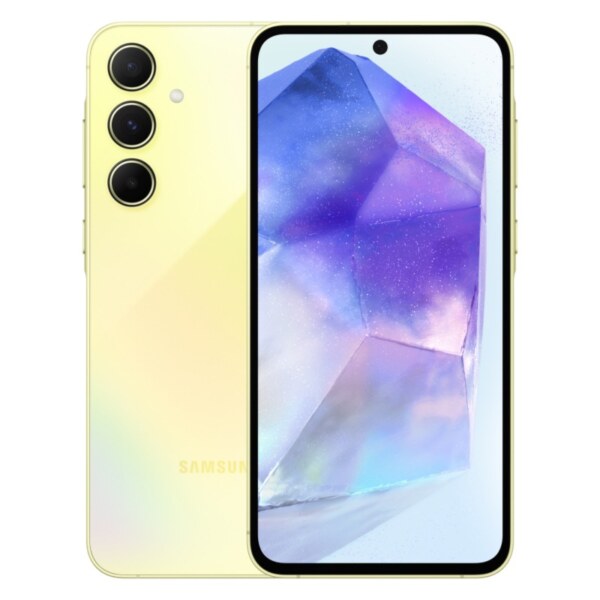Samsung debuted a new set of Galaxy A-series smartphones in India a while back and one of them was the Galaxy A55 5G. The new A55 5G brings some promising upgrades over last year’s A54 5G and starts at Rs 39,999 in India. Are the upgrades enough to justify the price tag or did Samsung fail in providing a value-for-money offering to the consumers? We’ll have an answer for you by the end of our in-depth review of the Samsung Galaxy A55 5G.
Design & Build
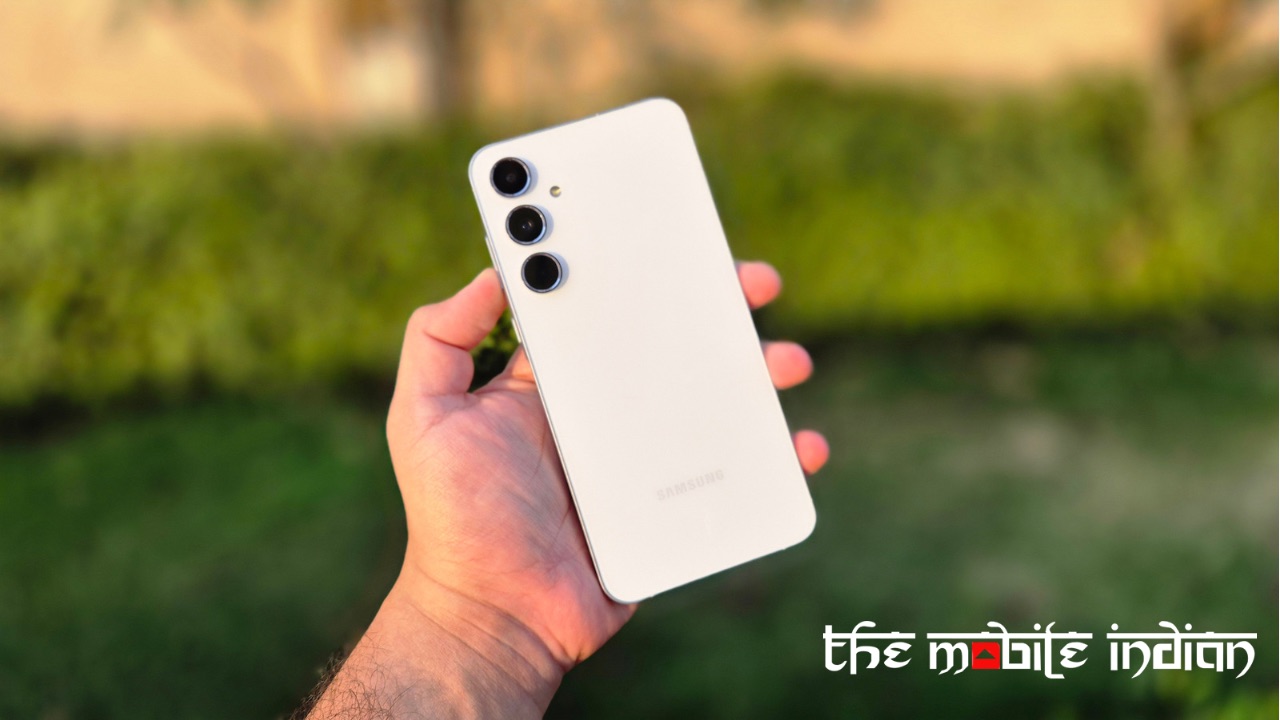
The Galaxy A55 5G sports a glass panel on the back that’s protected with Gorilla Glass Victus+ and a metal flat frame. The keys are embossed in the key island, which is a protrusion in the metal frame the same length as both keys combined. The device is on the heavier side and actually feels a bit heavy in the hand.
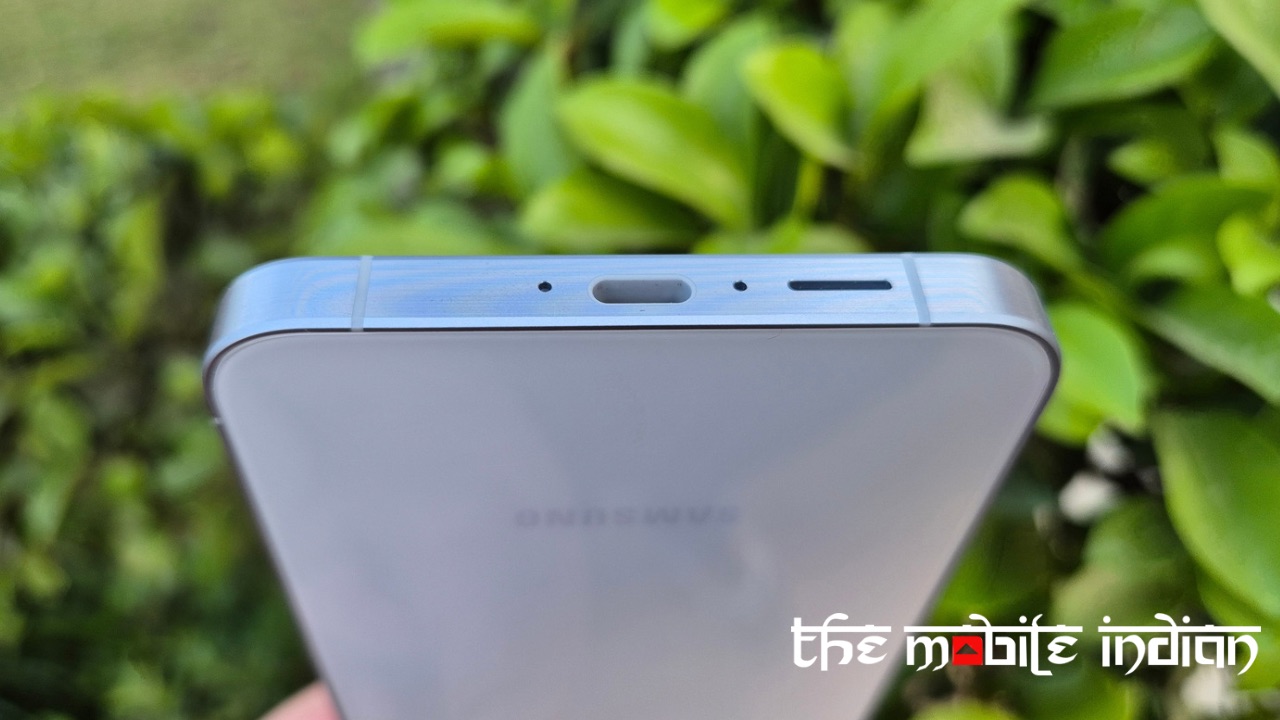
Combined with the metallic feel and glass on the back, the Galaxy A55 5G leaves no stone unturned in terms of how premium it feels in the hand. It’s actually as good as the flagship Galaxy S24+ in terms of feel. However, the edges of the frame are sharper in the Galaxy A55 5G, while the Galaxy S24+ has slightly curved edges.
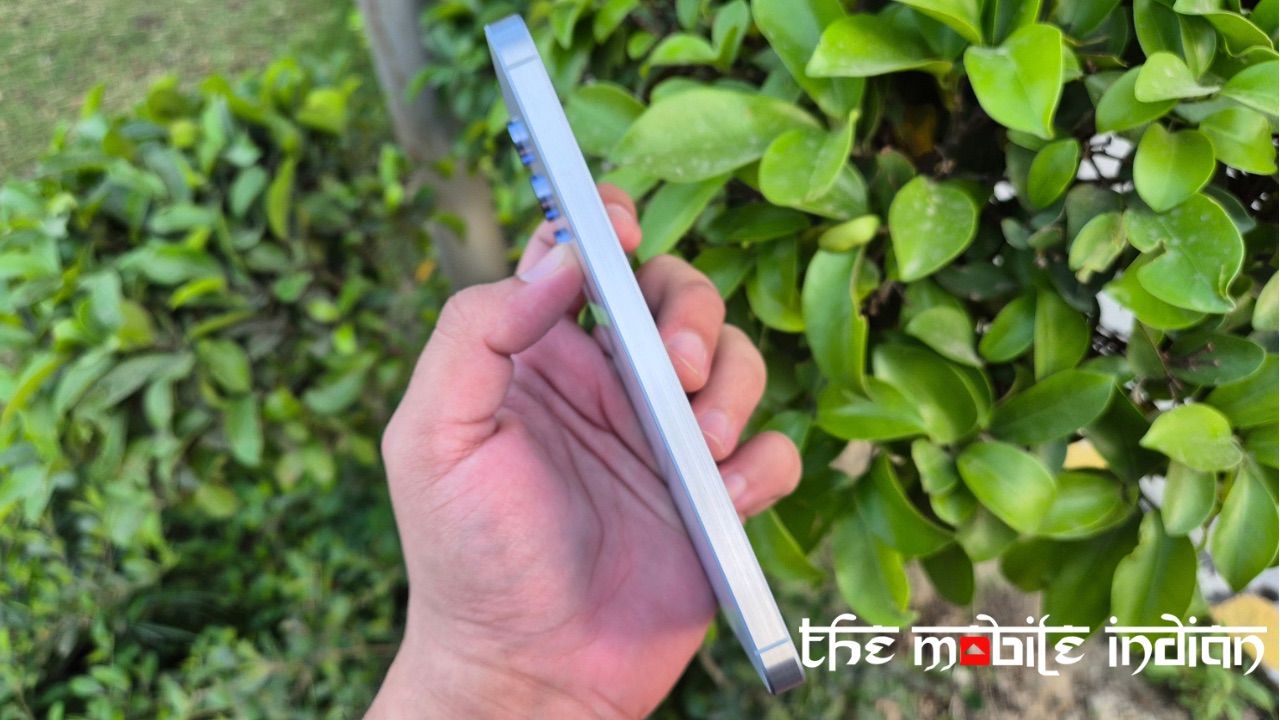
While not the most vibrant, the icy blue shade appears pristine. The back panel highly resembles the design of the brand’s flagship devices, the S24 and S24+, but Samsung has tried to create a differentiation by giving the cameras a ring border of the same blue shade as the phone’s back panel. It’s much better than the Galaxy A54 5G because it looked even more similar to the Galaxy S23 series.
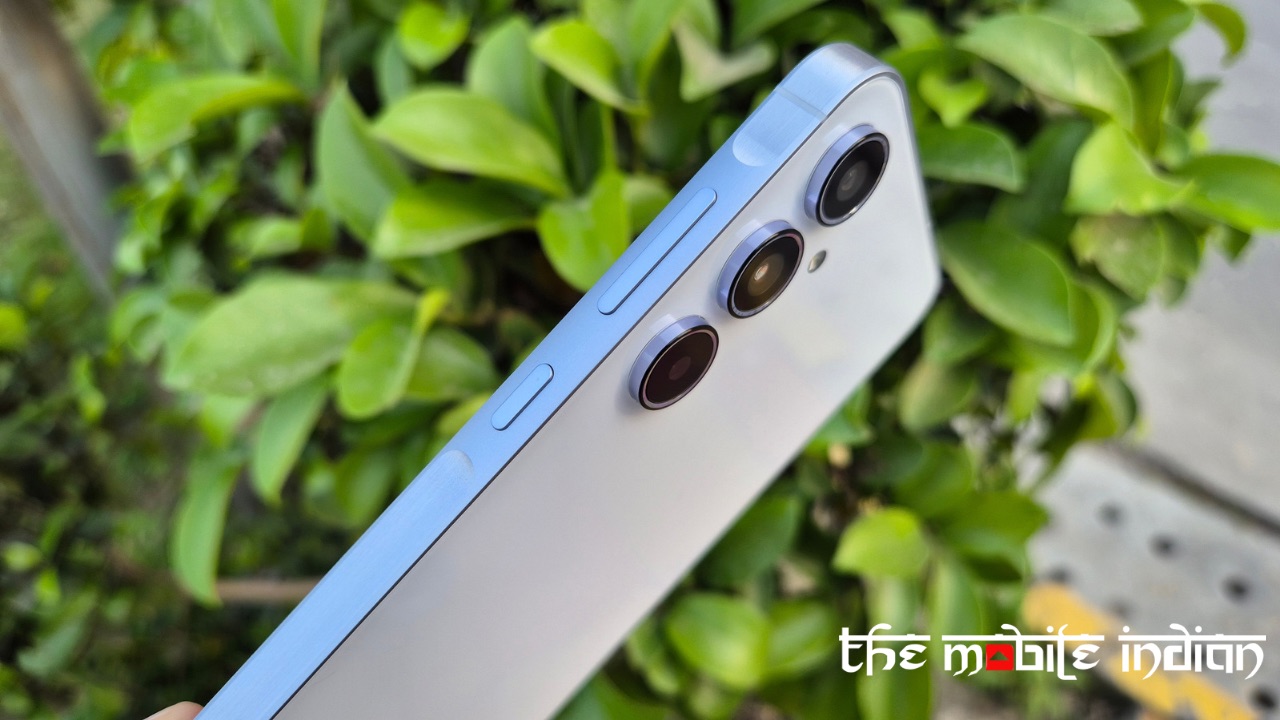
The key island feels unique, and correlating to that, I have also noticed that Samsung has improved the buttons in its 2024 smartphones. Not only has the size of the keys been increased, but the tactile feel while clicking them has also been significantly enhanced. The handset is IP67 rated as well, so splashes and dirt shouldn’t hurt the device either.
The Haptics are slightly weak compared to those of the Galaxy S24+, but they aren’t bad by any means, and they complement the overall premium feel of the device.
The stereo speakers are loud enough, while the bass is on the weaker side. However, the treble is decent, and the overall quality is impressive.
Display
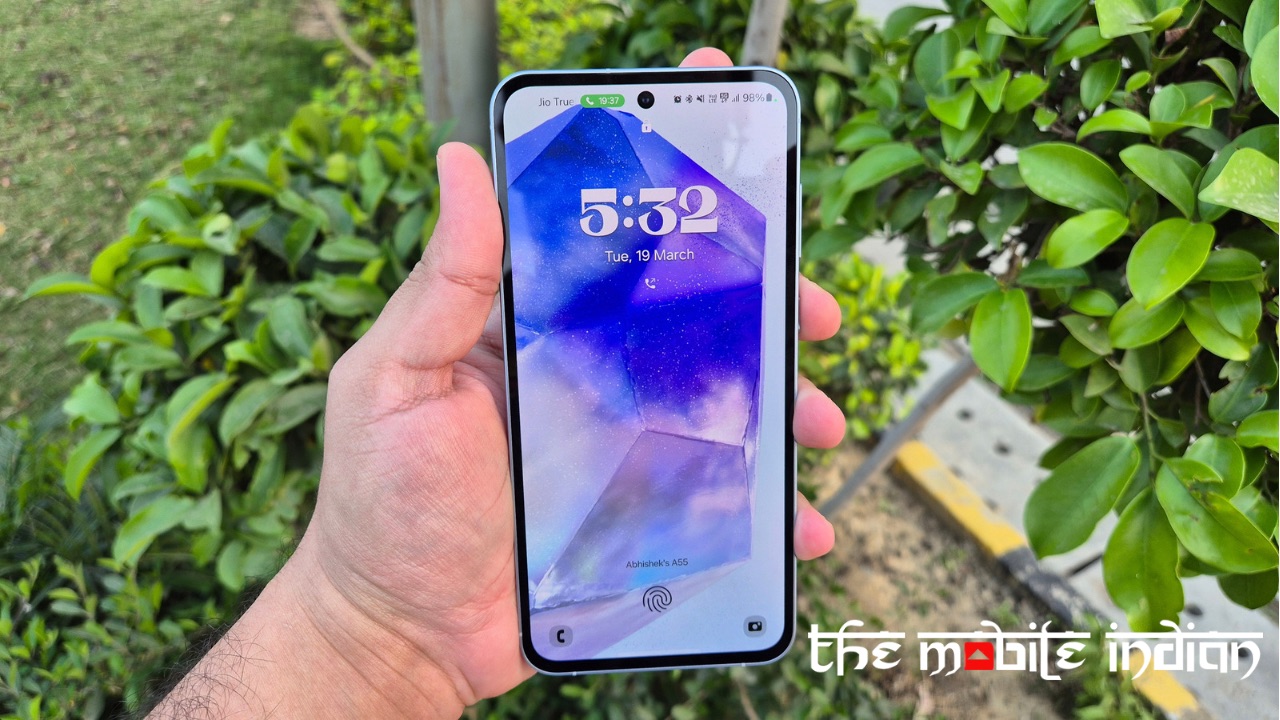
The Galaxy A55 5G sports a 6.6-inch 120Hz Super AMOLED panel with a full-HD+ Resolution (1080 x 2340 pixels), Gorilla Glass Victus+ protection and 1000 nits peak brightness.
As usual with Samsung smartphones, it’s a great panel. The colours aren’t as vibrant and in fact, they look similar to how they were on the Galaxy S24 series before it got the vividness slider update. They have a more natural tone, and I feel they could be more vibrant.
On the other hand, the brightness levels are acceptable outdoors, while the viewing angles and responsiveness are decent. In addition, the Netflix App says that the device supports Widevine L1 and HDR 10. Watching videos on the handset was also quite a pleasant experience.
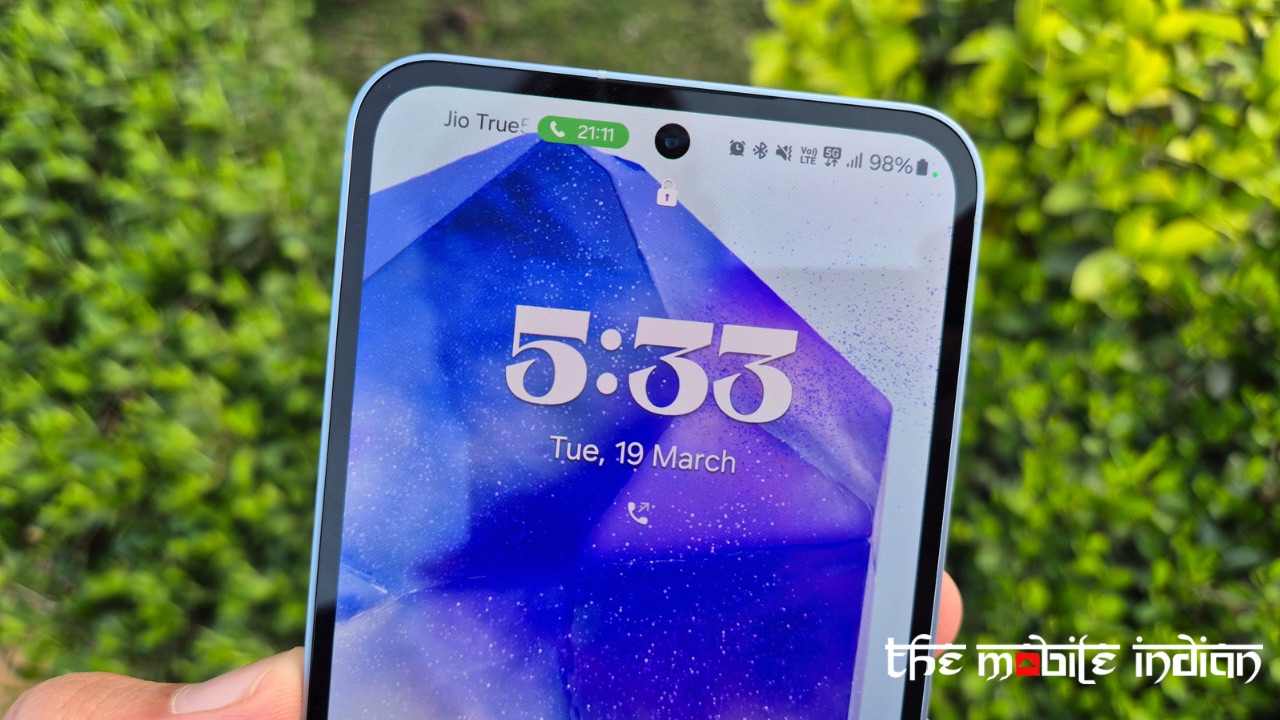
The bezels on the front look odd to some extent because they aren’t even on all sides. They are thicker than expected, and based on what we have seen on iQOO Neo 9 Pro and the OnePlus 12R, we feel Samsung could have done much better here.
An in-display optical fingerprint sensor is on offer, which works as it should. It’s also quick, responsive, and accurate.
Performance & Software
The Galaxy A55 5G has an Exynos 1480 SoC at its core, paired with up to 12GB RAM and up to 256GB storage. Samsung offers 128GB storage in the base model, which is disappointing considering the competition is well ahead with up to 512GB storage in Poco X6 Pro 5G at Rs 27,999.
As for the chipset, we have had our doubts about Exynos, but it surprised us with the kind of performance we saw with Galaxy S24+. The Exynos 1380 in last year’s Galaxy A54 5G also wasn’t the best in daily use, but fortunately, the Exynos 1480 works like a charm in daily use.
The Chipset also doesn’t let the phone lag and doesn’t overheat. It does get warm in some tasks, but the usual ones, such as during extended camera usage, trying to load it with heavy games, benchmarking, or if you are on max brightness with GPS navigation turned on.
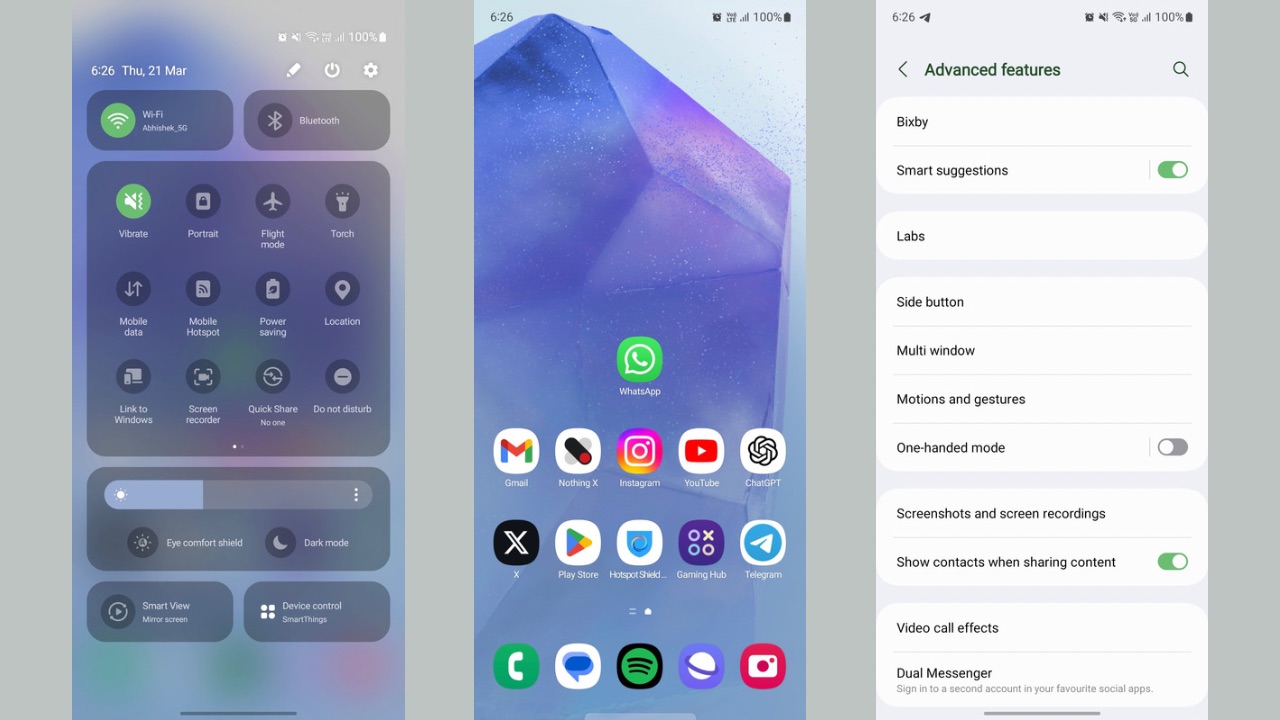
Exynos 1480 works nicely in day-to-day usage, making the phone feel snappy, but it does struggle with heavier games. It cannot compete with the likes of the Snapdragon 8 Gen 2 or the MediaTek Dimensity 8300. The frame rate fails to stay consistent during a more extended gaming session than usual.

As for benchmarks, the Galaxy A55 5G scored 1143 points in single-core and 3453 points in multi-core. To put in perspective, the single-core scores match that of the Galaxy S21 Ultra, while the multi-core scores match Pixel 7 Pro’s. We’d say these are decent but aren’t the best by any means, especially compared to the competition.
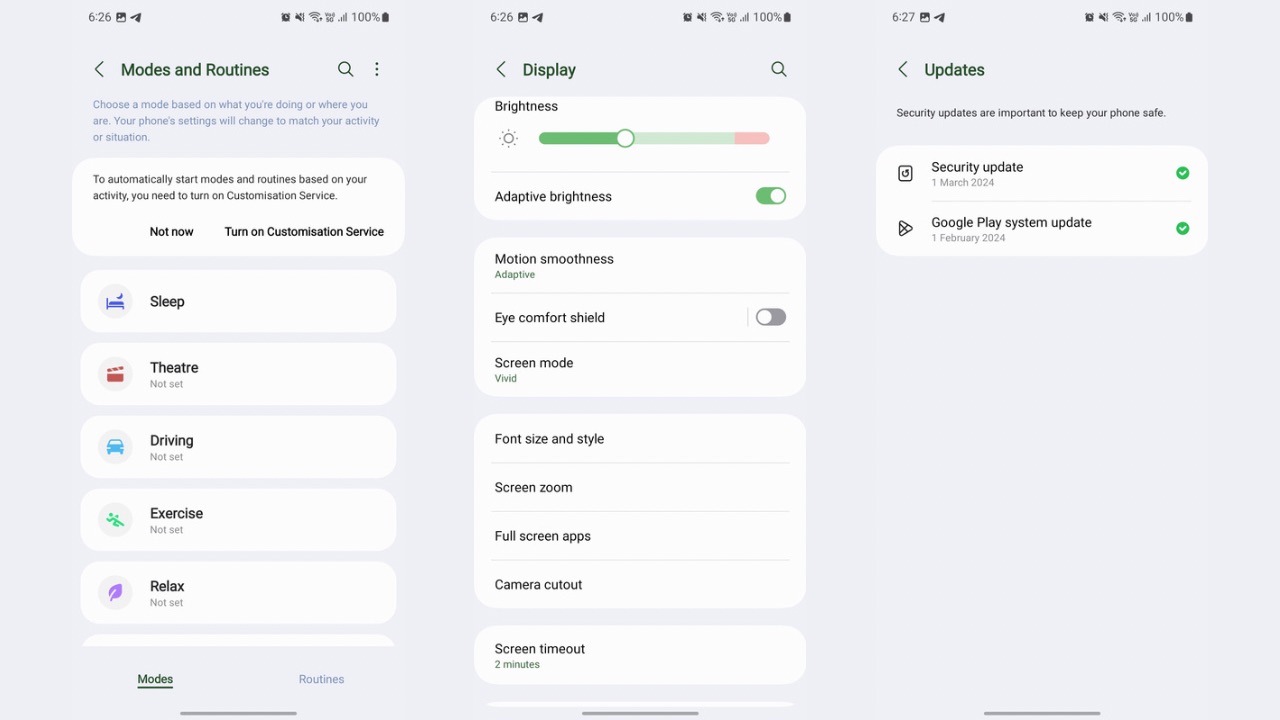
The Galaxy A55 5G runs on One UI 6.1 based on Android 14 and is set to receive updates till Android 18 with 5 years of security patches. While the device may not be able to match the experience of some other performers in the same segment regarding power, its software experience remains unmatched despite a couple of shortcomings.
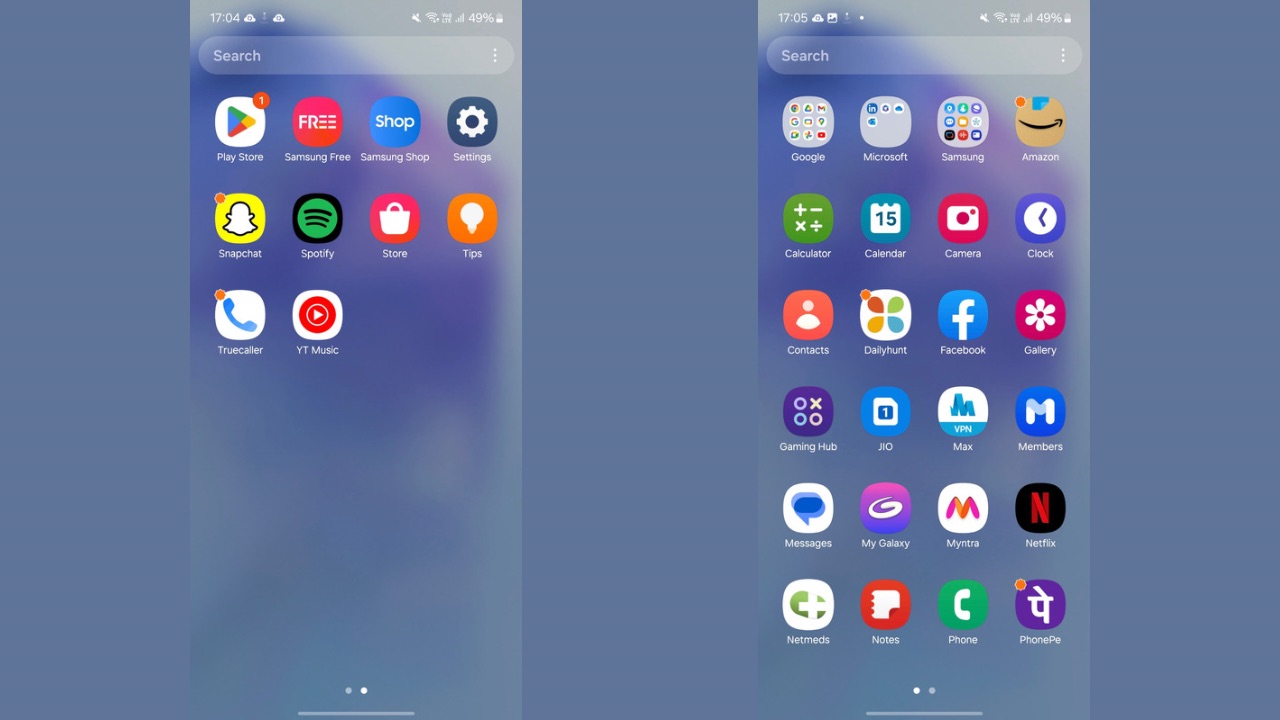
Talking about the shortcomings first, the A55 has some bloatware installed, including third-party apps like Snapchat, PhonePe, Truecaller, Dailyhunt and Amazon. All of them can be uninstalled. On the other hand, the device has a Glance lock screen enabled by default, but you can also disable that by going to settings > wallpaper & style > change wallpaper > scroll down to the bottom and tap on “wallpaper services” > now tap on “None” and you are done.
Next, there were some stuttering animations when opening apps, which was solved when we got the March 2024 update on the device that had the security patch of the same month as well.
On the upside, the March 2024 update also revealed that Galaxy A55 5G is the first Samsung device that supports seamless updates. Aside from that, One UI 6.1 flies with daily use and is basically the same as seen on Galaxy S24 series, minus the Galaxy AI features.
It has a number of other features, though, you’ll get tired of exploring, such as the new Clock fonts for lock screen and AOD, multi-window, maintenance mode and a lot more. Moreover, it’s one of the most stable Android skins out there without any major bugs as we have seen on FunTouch OS, hence, the unmatched experience we talked about.
Connectivity performance, including Wi-Fi, 5G, and Bluetooth connections, remained optimum.
Battery Life
A 5000mAh battery with 25W Fast charging and no in-box charger provided backs up the Galaxy A55 5G. Speaking of the backup, the Galaxy A55 5G gave us an incredible runtime. The device gave us about 5.5 hours of screen-on time with a day’s worth of use in the first charge cycle. It ran for about a day before coming down to 16%.
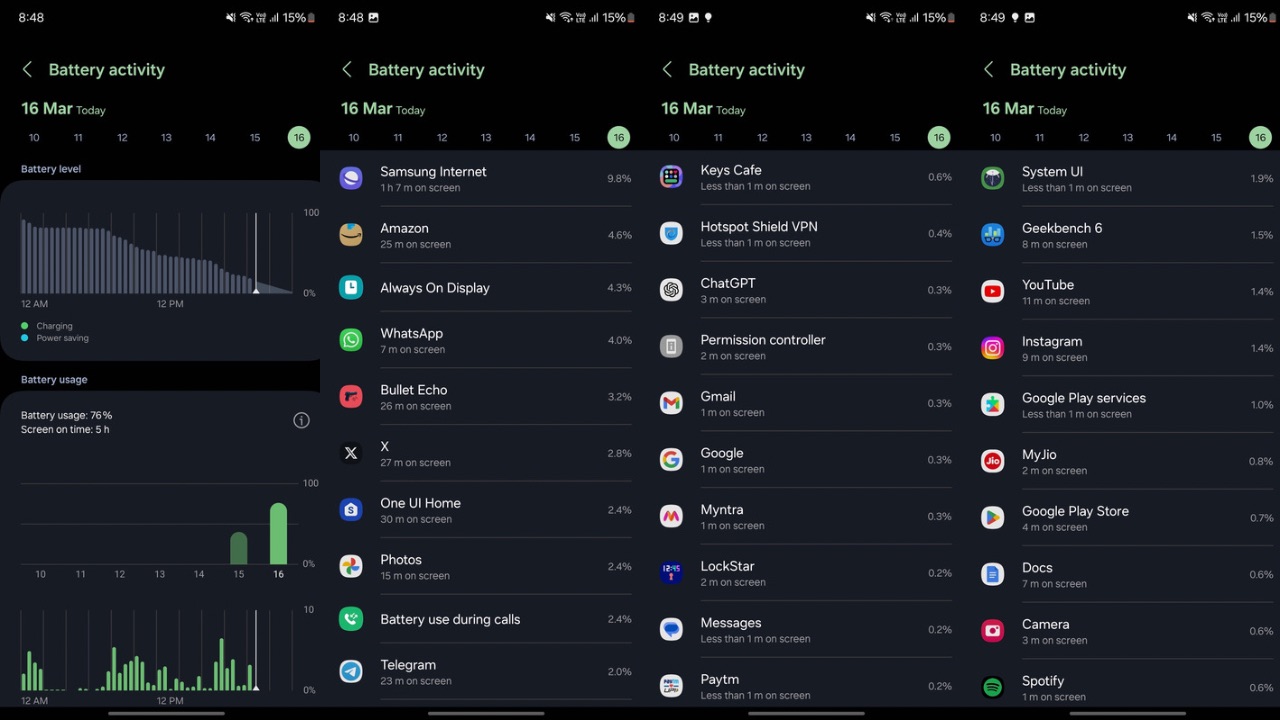
However, with the second cycle, which included almost the same type of usage, such as mixed 5G and Wi-Fi connectivity, calling on 5G, some gaming, browsing the internet and social media apps, and some chatting, the device ran for about 34 hours before dropping to 15% with slightly above 6 hours of screen-on time, which is amazing.
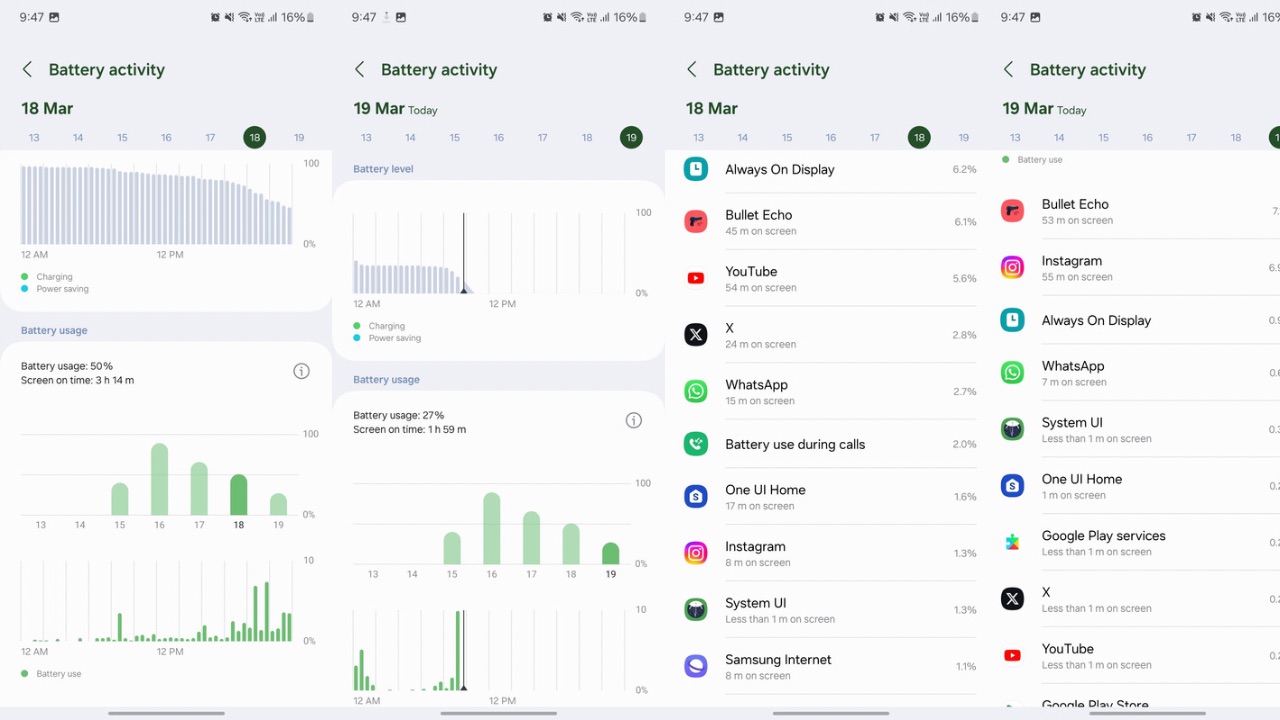
The device supports 25W fast charging, and at the maximum speeds, it takes about 1h 10m to go from 19% to 100%. It takes about 1h 30m from 0 to 100%, which is quite disappointing. That’s because the competition has upped the game significantly. iQOO Neo 9 Pro can charge from 0 to 100 in about 30 minutes with the provided in-box charger, and so does the OnePlus 12R.
Cameras
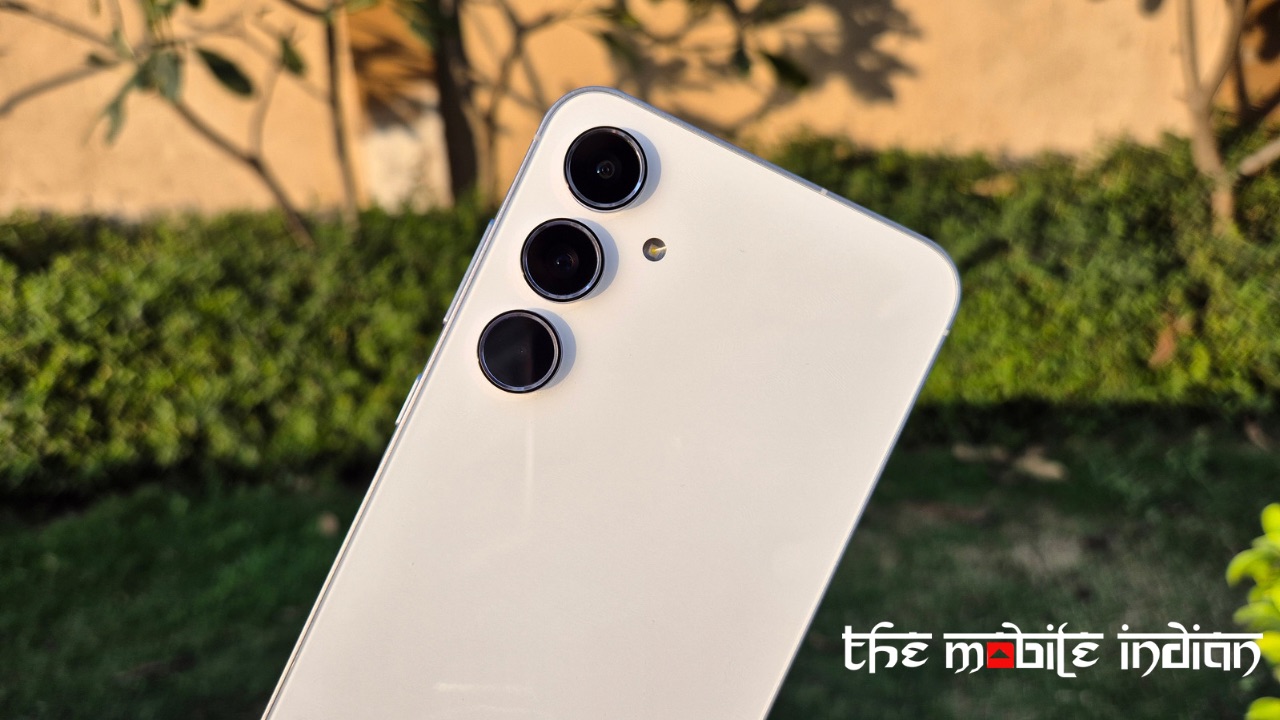
At the back, the Galaxy A55 5G gets a triple cam setup including a 50-megapixel f/1.8 primary shooter, along with a 12-megapixel f/2.2 ultra-wide snapper and a 5-megapixel macro camera. The front-facing camera includes a 32MP f/2.2 sensor for selfies.
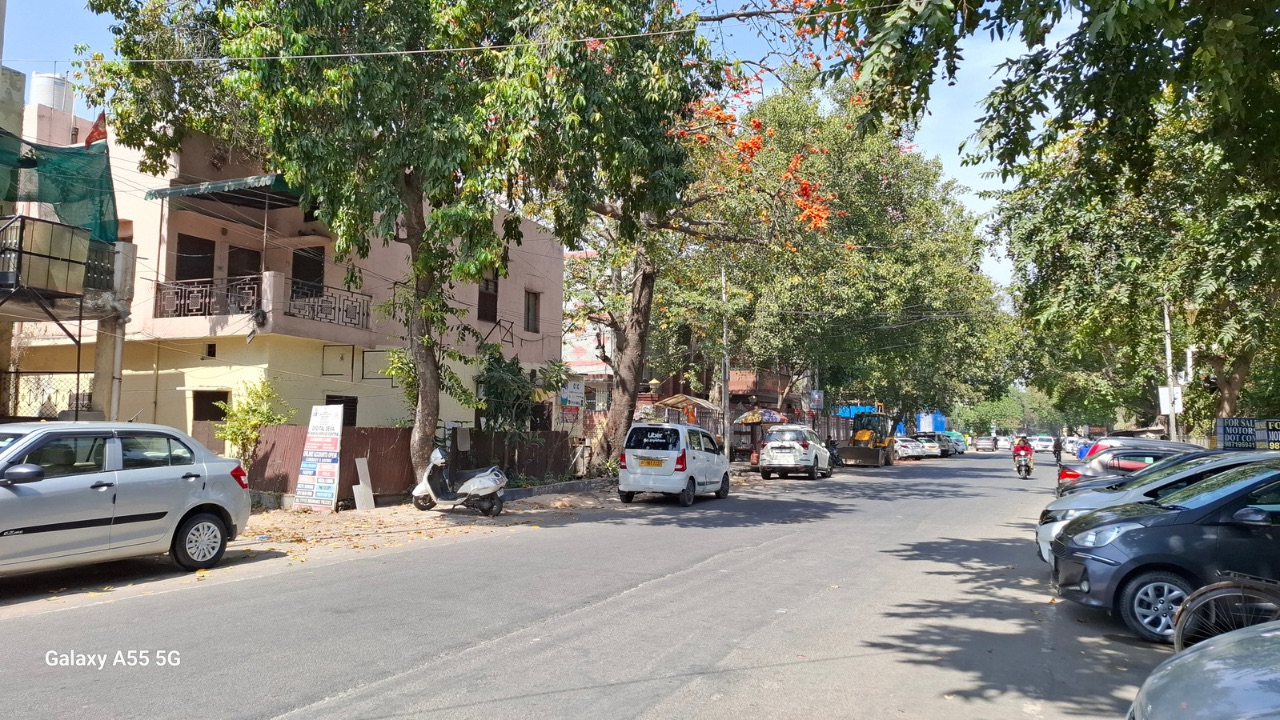
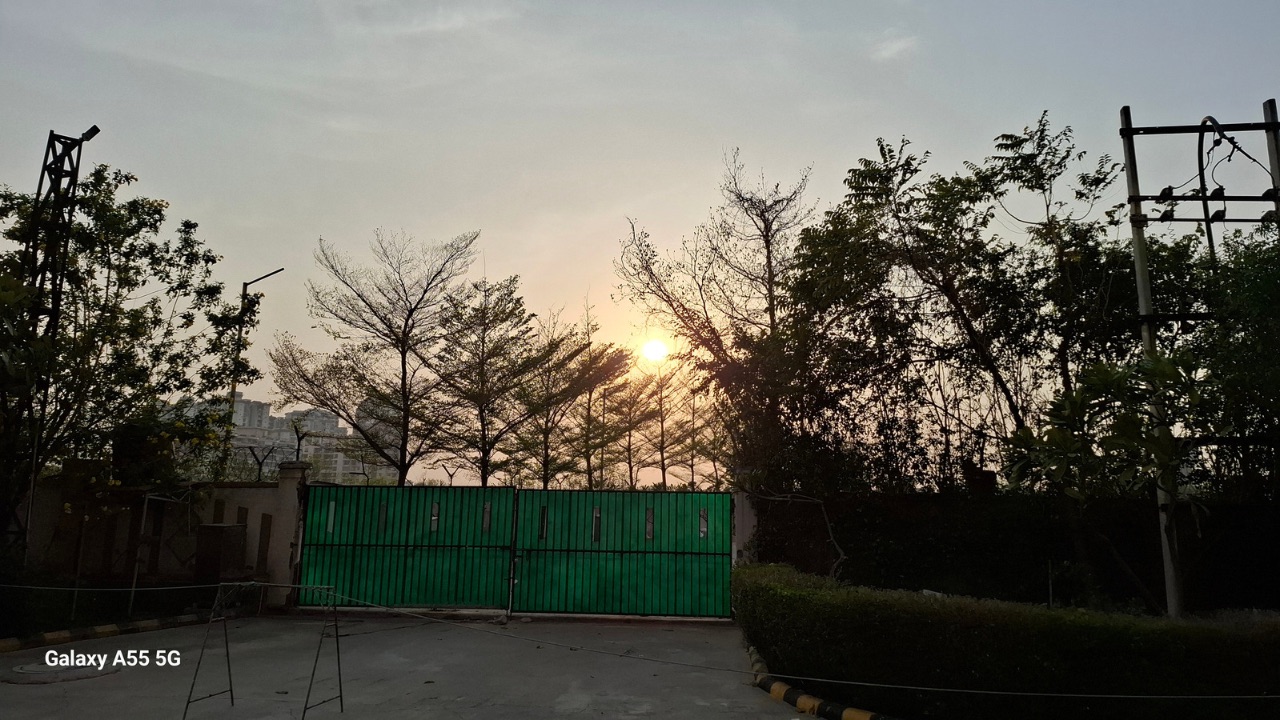
The primary sensor shoots impressive photos in broad daylight. The detailing in the shots is excellent, while the colour science remains typical Samsung. The photos are vibrant and lifelike, showcasing Samsung’s signature color palette with vivid hues. The dynamic range in shots is also incredible, and the overall shot is quite decent.
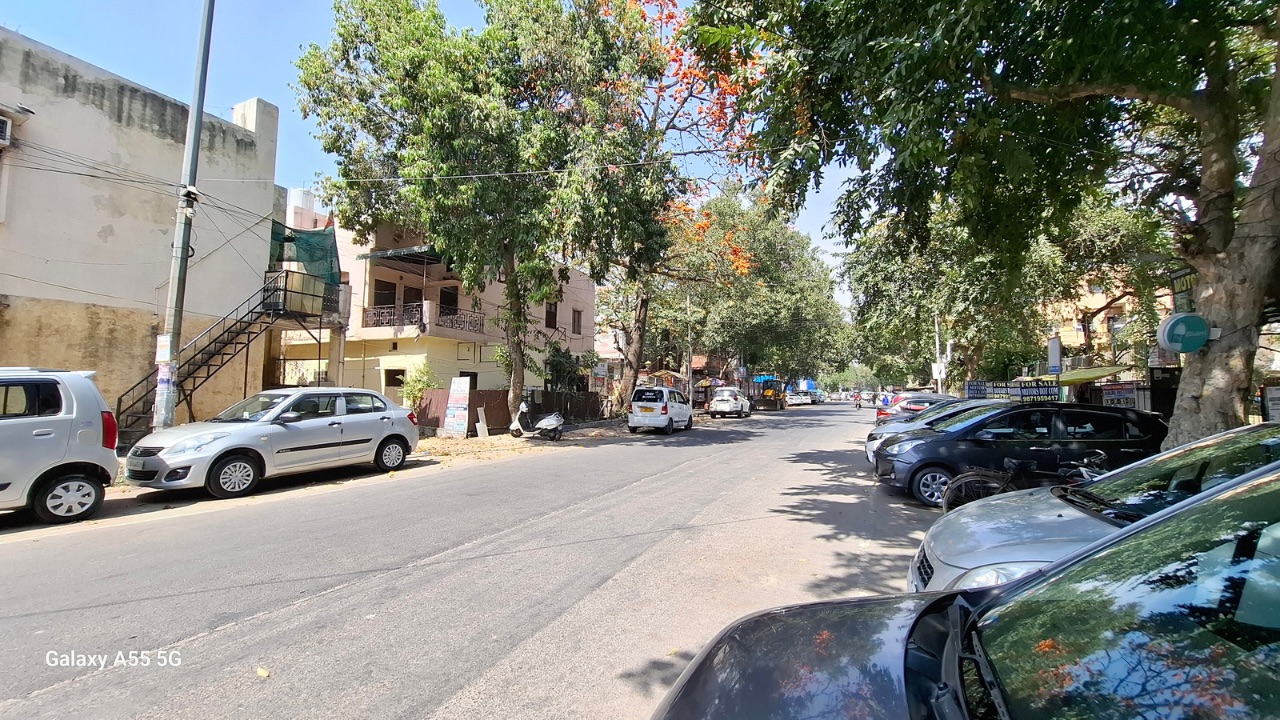
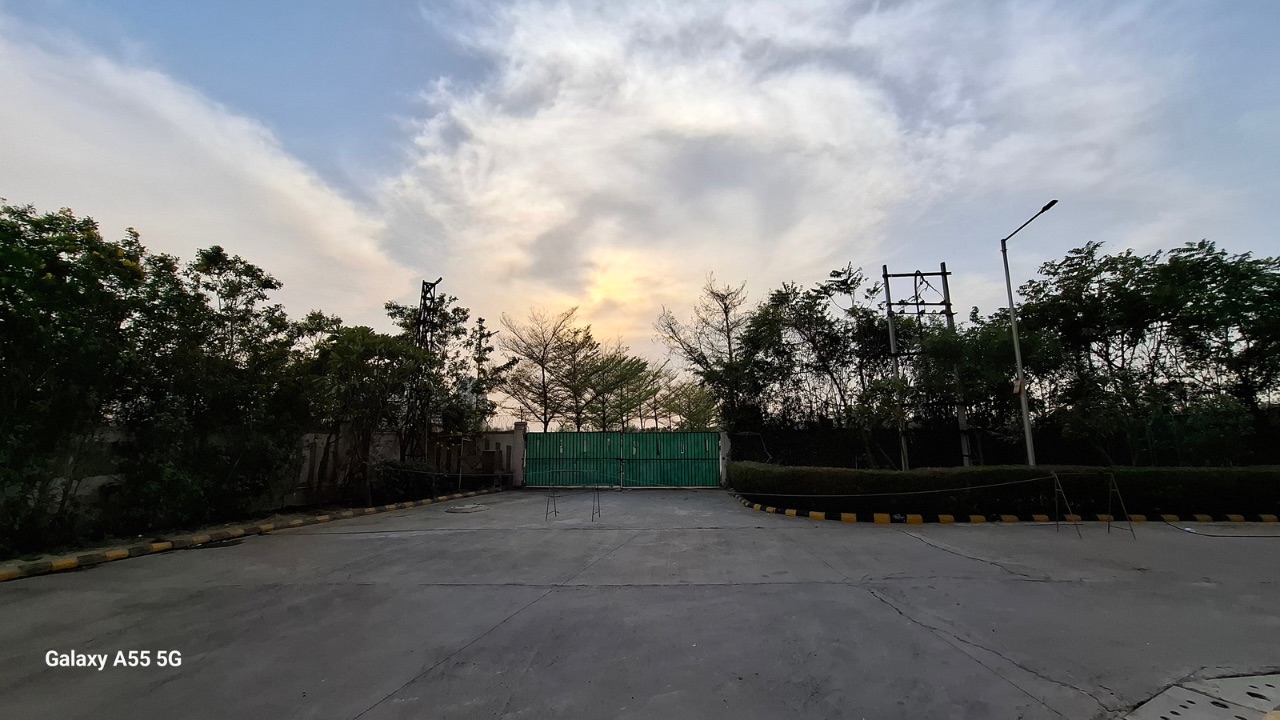
Samsung has also maintained the colours incredibly well in ultra-wide angle shots. There’s little to no shift in the shades of the shot over the main sensor’s photo. The detailing is again well handled, and so is the sharpness. However, the EDGE distortion could have been better in these photos.
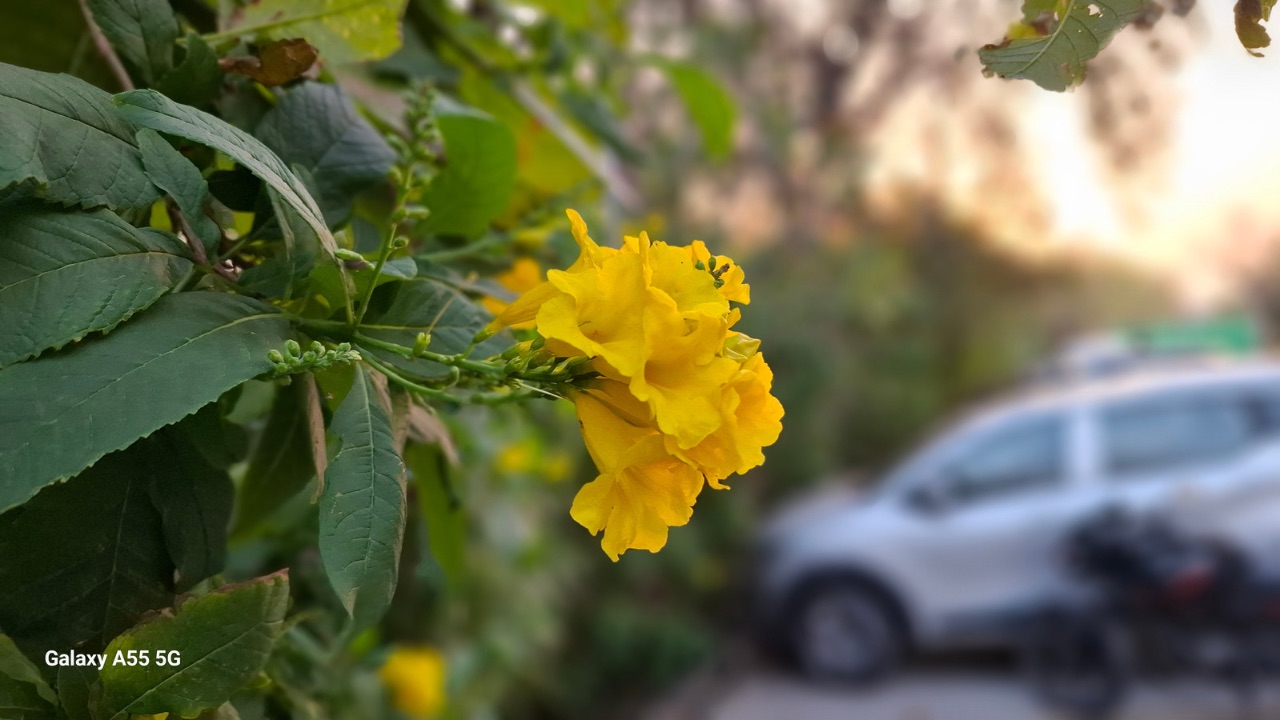
When it comes to portrait photos, they certainly don’t disappoint either. The bokeh effect is impressive, boasting incredibly accurate edge detection. The background bokeh effect feels natural, and the level of detailing in the shot is exceptional.
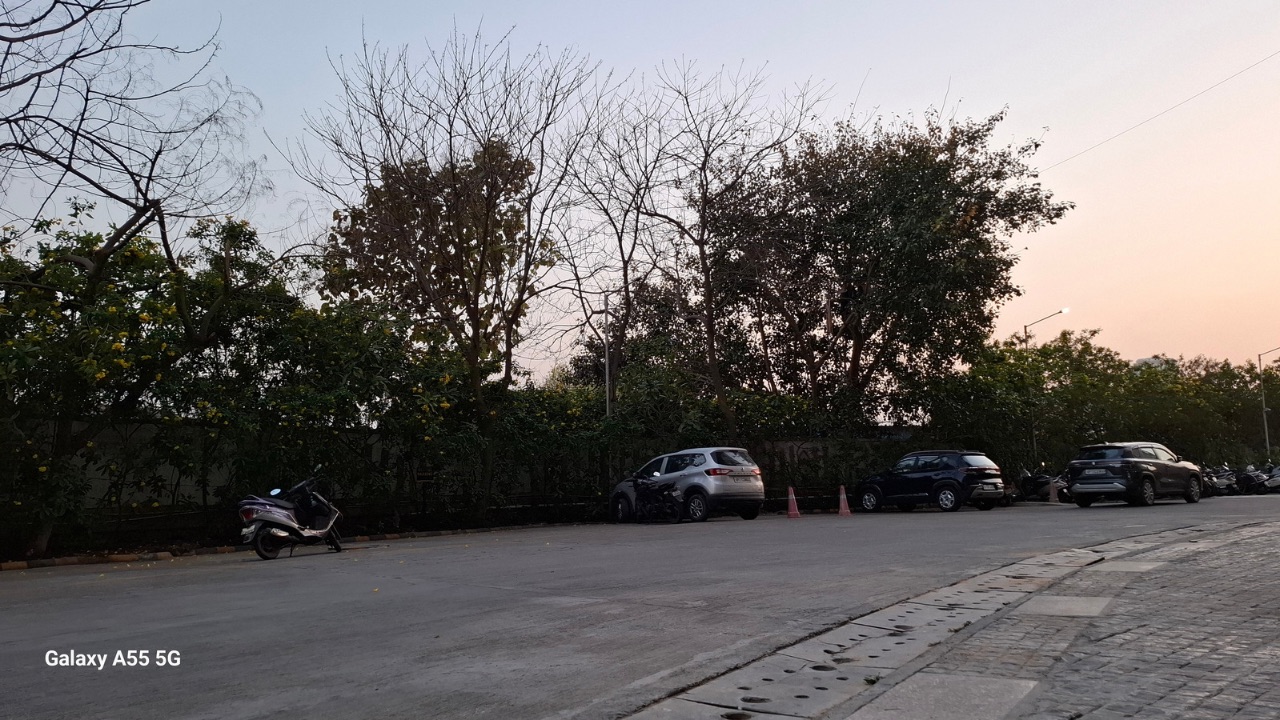
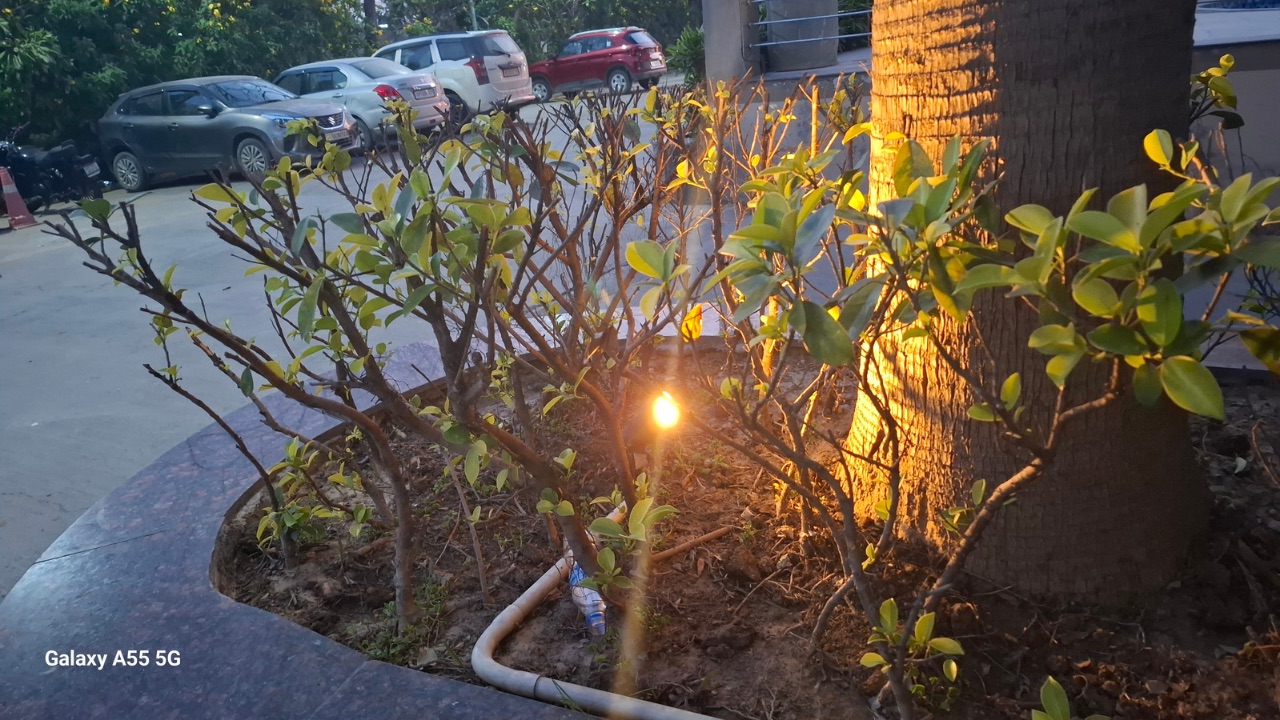
The camera easily handles low-light situations, producing noise-free photos while maintaining the integrity of colors. Even in artificial lighting conditions, the device delivers satisfying results. Although edge detection may suffer slightly in these scenarios, the colors appear natural, and there is no compromise in the sharpness of the shot.

While selfies have a high level of detailing, the skin tones could have been produced more naturally.
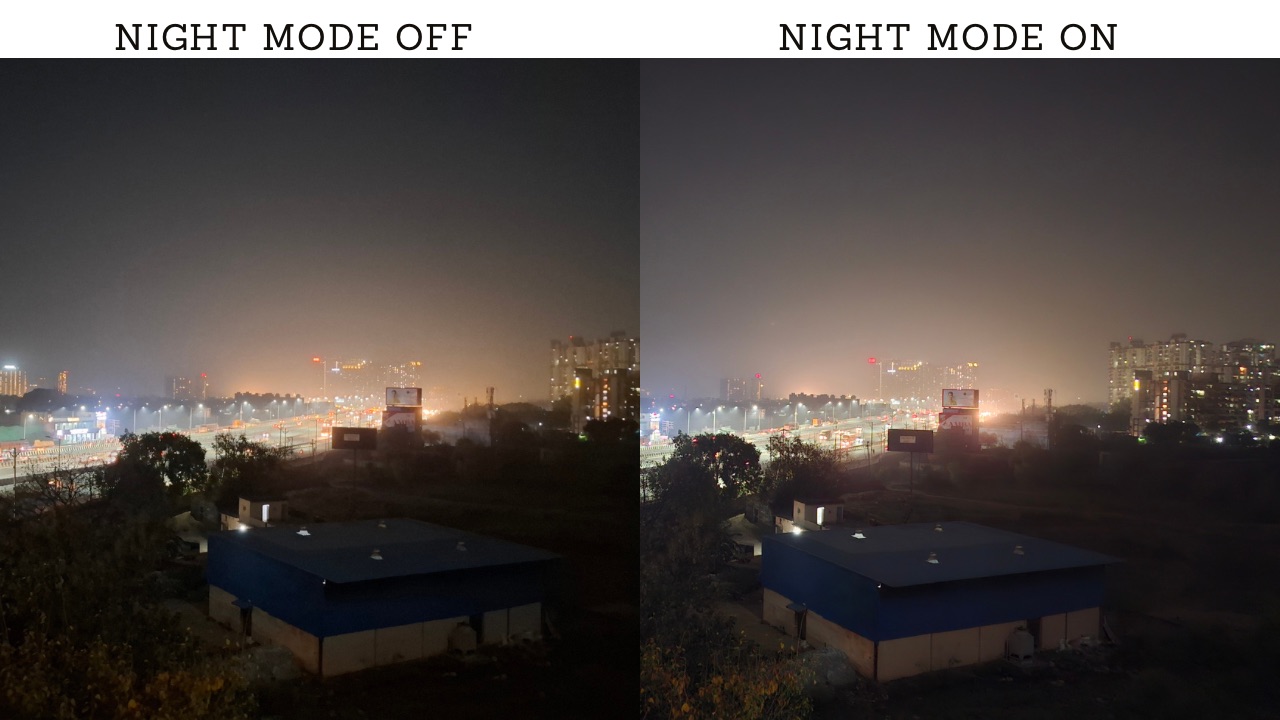
Under extreme low light, such as nighttime shots, the photos do have slight noise, but turning on Night mode improves the whole situation. The colours look nice while the detailing remains intact, to the extent that even the text written in distance was visible if you zoomed into the photo.


